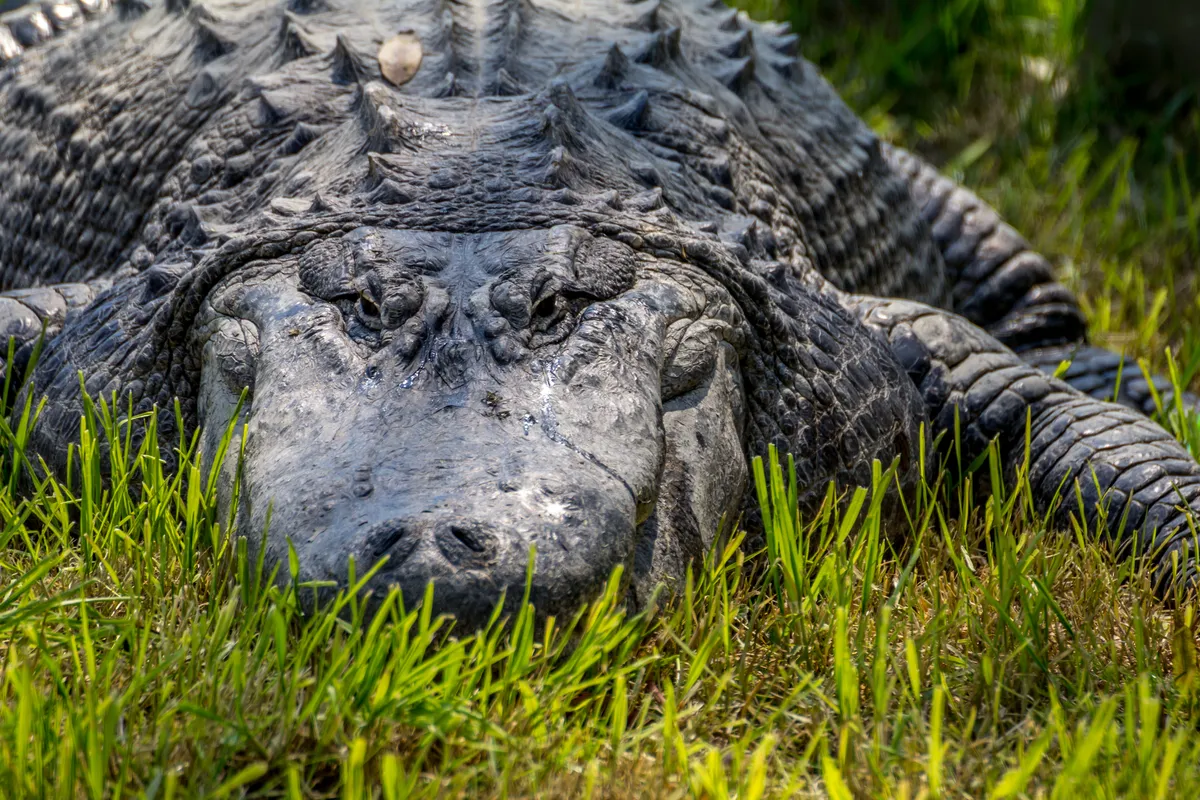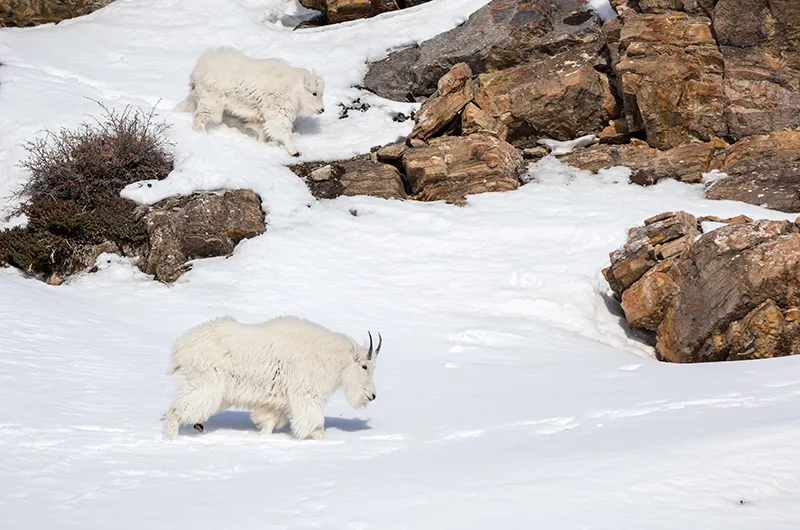Toughest animal ever

The microscopically tiny, teddy bear-like tardigrade can survive just about anything. It’s not fazed by extreme cold or extreme heat – temperatures from absolute zero to boiling point – high doses of radiation, pressure equivalent to the forces found in deep ocean trenches, being almost completely dried out for years and even being in a vacuum. It does represent the ultimate in indestructibility but there are other animals that can also claim their share of fame as being the toughest animals on earth in a variety of ways.
Toughest diet

The lammergeier, or bearded vulture, has a curious preference in food items. Although it is mostly a scavenger that feeds on dead mammals, it shuns a lot of the flesh and skin of a carcass, using this only to feed to its chicks, in order to concentrate on the bones.
It can swallow whole bones up to the size of a lamb’s leg. Bigger bones it takes hundreds of feet into the air and drops onto rocks to shatter them. It will often do this repeatedly until the pieces are of a suitable size to fit down its throat.
It is also not unknown for the birds to drop living animals to their death, using their enormous seven- to nine-foot wingspans to drive larger animals over the edge of a precipice. The reason the bird can feed itself so successfully on a bony diet is down to its very specialised stomach acid that will dissolve the densest bone and cartilage in less than 24 hours.
Toughest in the cold

The North American wood frog can survive severe winter temperatures in Alaska even if 70% of the water in its body freezes. The effect of freezing on normal cells is for ice crystals to form and break up the cells’ structure. Wood frogs prepare for this by accumulating urea in their blood and converting large quantities of glycogen in their liver to glucose that circulates with the urea.
These substances combine to prevent the cells from being damaged when their water content freezes. With these protections, wood frogs can survive temperatures down to around -14º C (7º F) for about 200 days. For short periods they can tolerate even lower temperatures. The only other contender for such cold endurance is the Japanese tree frog that can survive freezing as low as -30º C (-22º F) for up to 120 days, but scientists are still unsure how it does it.
Toughest in the heat
Temperatures in the water around hydrothermal vents on the Pacific Ocean floor are some of the highest on earth, but that doesn’t bother the Pompeii worm. These 5-6in (12-15cm) members of the bristle worm family reside in tubes made of polymer layers, often with their tails right next to the vents – fissures in the seabed from which geothermically heated water emerges – where the water can be 80º C (176º F) in heat.
Meanwhile, the red feathery gills on their heads poke up into waters that, away from the vents, are a much cooler by comparison, but are still at 22º C (72º F).
Scientists think that a furry covering on the worms’ backs, formed by colonies of bacteria that contain special proteins to protect them from heat, acts as an insulator. The worms, in return for the thermal shield blanket, secret a mucus that the bacteria feed on.
Toughest skin

If you’re looking for impenetrable body armour, look no further than the saltwater crocodile, the skin of which can stop a bullet. This tough hide is made up of knobbly plates on its back, tail and head called scutes. These are composed of keratin, a super-tough protein that also forms the horns of a rhino, the hooves of a horse and our own fingernails.
Underneath the scutes is a layer of overlapping plates of calcium phosphate and collagen called the osteoderm. This is essentially bony tissue, full of blood vessels, that not only protects the crocodile but also acts as a heat-exchanger, helping to regulate its temperature.
Crocodiles need this heavy-duty hide to keep them alive in fights with other crocodiles because one of the other notable characteristics of the species is the power of its bite. This enables it to tackle prey animals much bigger than itself but is a bit of a drawback in domestic disputes.
Toughest in a fight

Dubbed ‘pound-for-pound the most powerful creature in Africa’ the honey badger wins the crown for fearless behaviour. Aggressive and intelligent, about the size of a red fox but much, much heavier, this mustelid will take on any other species if threatened.
Honey badgers have been reported attacking horses, Cape buffalo, lions and hyenas that have disturbed their burrows or cornered them in some way. They are equipped with a variety of defences – loose, thick skin, five sharp-clawed toes on each foot, a pungent yellow liquid expressed from anal glands, a tendency to charge headlong at an adversary, and an unnerving scream.
Their skin, particularly around the neck, protects vital organs and resists insect stings, porcupine quills and bites from other mammals and its looseness also prevents a predator from getting a good hold on it, as it can twist itself free.
Toughest migrant

The amazing feat of endurance of Arctic terns cannot be bettered. The birds fly a round trip of 44,000 miles (70,000km) on their migration from their summer quarters in Antarctica to their breeding grounds in north America, northern Europe and the Arctic.
Despite having a wingspan of only 36cm (14in) and weighing only 86-130g (3-4.5oz) they navigate the offshore coasts of Europe and Africa, north and south America in three to four months twice a year, using the prevailing winds to assist with the flight.
Because they feed mainly on small fish and crustaceans, they are rarely seen by humans on their epic journeys, sleeping on the wing and only landing for any length of time when they arrive at their destinations. They are long-lived birds, so in a 30-year lifespan it’s possible that they will have travelled some 1.5 million miles (2.4m km) – from the earth to the moon and back three times!
Toughest defence system

Predators are given warning that a porcupine is annoyed. First it raises its quills – spines of modified hairs up to 20in long, each covered in around 800 microscopic overlapping barbs of keratin. There are 30,000 of them covering most of the animal’s upper body.
Next, the porcupine rattles the special cluster of hollow quills attached to its back end. At the same time, it chatters its teeth and emits a foul smell from the skin above its tail. If these powerful signals are ignored, the porcupine follows up its tough stance by running backwards into its attacker, impaling it with the quills of its back and tail.
The backward-facing barbs on the quills make them very difficult to remove, rather like tiny arrows embedded in the skin. If the attacked animal survives but any quills are left in place, they can cause infection. It’s a defence mechanism that is at least extremely painful and maiming, at worst lethal.
Toughest to identify

Imagine you’re a marine predator – a shark or moray eel – in search of a meal, and a small defenceless octopus will do nicely. What you would not expect is for your quarry to suddenly change into something you’d rather avoid, like a poisonous sea snake or a scorpionfish with its deadline spines. That’s the handy trick employed by a mimic octopus that can alter its shape and colour drastically in order to ‘become’ any one of about 15 different sea creatures.
It can look like a lionfish by turning a stripy brown and white and holding its arms out to emulate the fish’s spines. Or it can colour up in black and white rings to become a banded sea snake, curling up six of its arms but leaving two trailing together to appear like a pair of serpents. Or, if it wants to sneak up on its own prey, it can choose to be spotty beige in colour and bunch all its arms together to stream out behind its body as it glides close to the seabed, looking just like a flatfish.
Toughest at climbing

For sheer skill on steep cliffs, you can’t find a nimbler climber than a mountain goat in north America or an ibex in Europe, Asia and Africa. Thanks to their unique narrow, two-toed hooves, that combine a hard outer rim to protect the feet on rocky ground with a pliable, rubbery pad that grips even smooth stone, both species can scale almost vertical slopes.
They have an enhanced sense of balance and their centre of gravity is nearer to the front end than the back quarters. This enables them to perform a pivot if they are standing on a narrow ledge and want to turn back, by doing a ‘hand stand’ on the front legs and placing the hind legs on the rock face to push themselves round. It’s not unknown for mountain goats and ibex to miss a step and slip, but they have a self-preservation technique. By spreading their sturdy legs and using their grippy hooves they can usually slide to a stop.
Discover more incredible wildlife:
